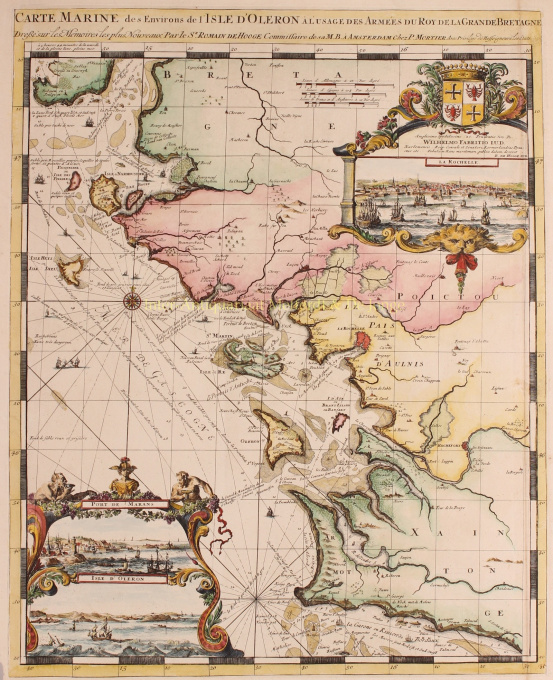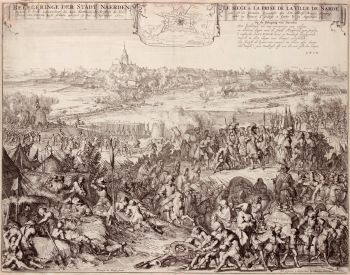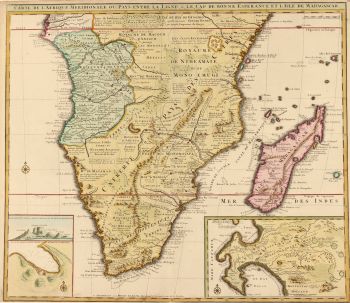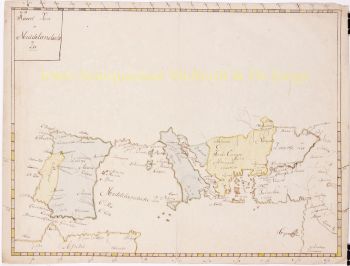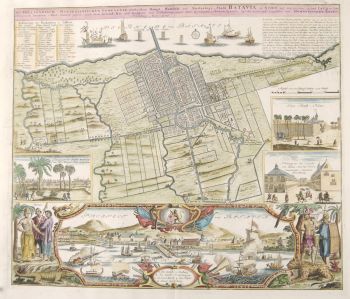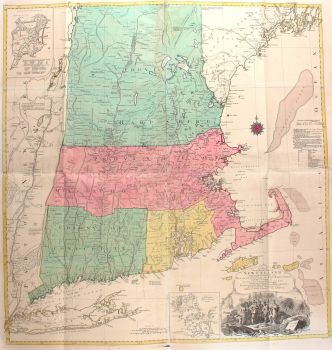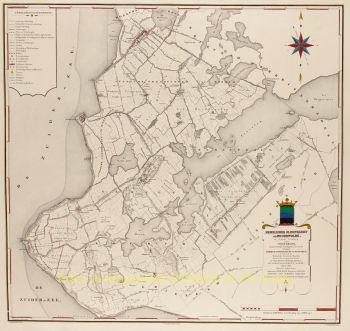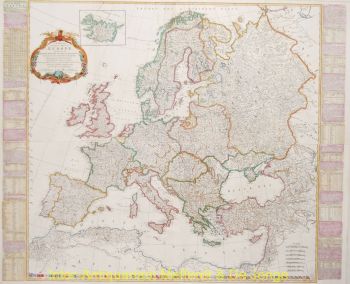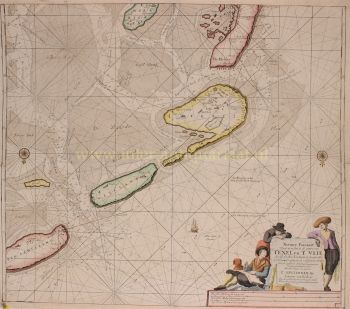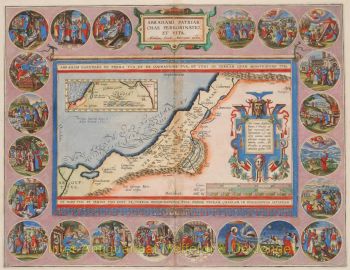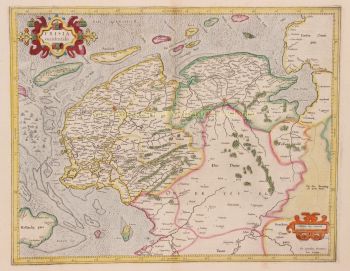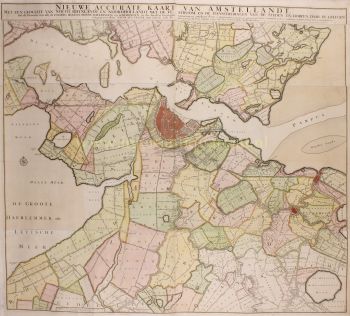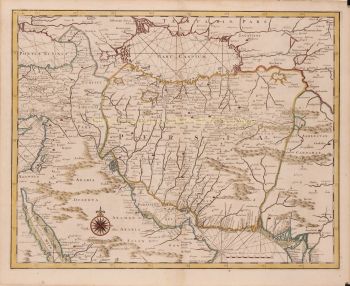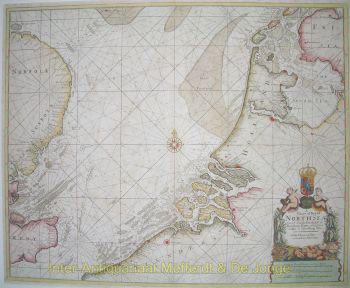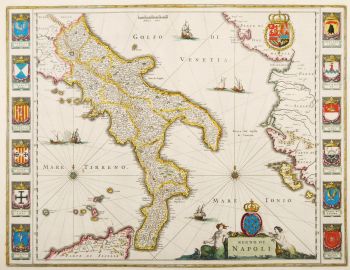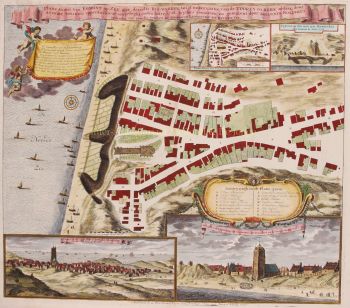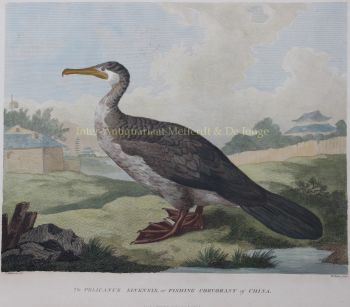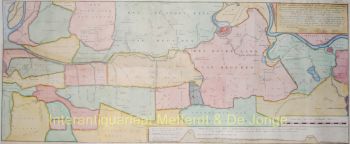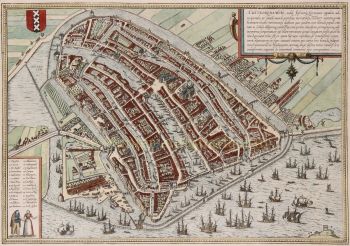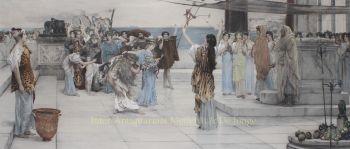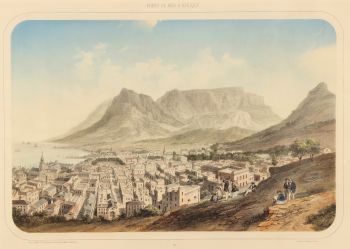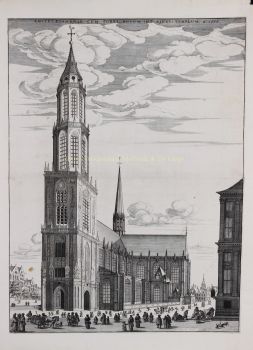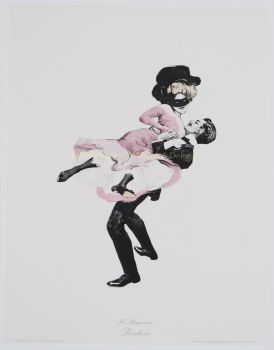Francia- Charente-Maritime 1693
Romeijn de Hooghe
€ 1.350
Inter-Antiquariaat Mefferdt & De Jonge
- A proposito di opere d'arte
BEAUTIFUL CHART OF THE FRENCH ATLANTIC COAST "Carte Marine des Environs de l’Isle d’Oleron", copper engraving made by Romeijn de Hooghe and published by Pieter Mortier of Amsterdam in 1693. Coloured by a later hand. Size: 59 x 48 cm. Elaborately etched and engraved chart of the French Atlantic of the coast off nowaday Charente-Maritime, extending from the Gironde Estuary in the South to the mouth of the Loire and Brittany (Bretagne) in the North, centered on the Pertuis d'Antioche strait with Îsle de Ré and La Rochelle. With a history of invading English, Îsle de Ré’s main port Saint-Martin was fortified in 1681 as a component of the belt of forts and citadels built to protect the military harbour of Rochefort (on the river Charente). With large inset views of La Rochelle, the port Marans and the island of Oléron, along with a decorative cartouche and dedication coat of arms. The Gironde is subject to very strong tidal currents, still today great care is needed when navigating the estuary. The lighttower of Cordouan stands at its entrance, already in 1694. Throughout the map there is detailed navigational information, such as currents, tides, the nature of the seabed, the harbours and indications of the water depths, reefs, shoals and sandbanks. The map is from the “Cartes marines a l'usage des armées du Roy de la Grande Bretagne”, the second part of the “Neptune François”, in which charts are larger and more lavishly decorated than those of any preceding book of this kind. This magnificent work was intended more as a show piece than something to be used by pilots at sea. (According to Cor Koeman it is “the most expensive sea-atlas ever published in Amsterdam in the seventeenth century”.) This part of the atlas, which contains nine charts, constitutes "the most spectacular type of maritime cartography”. It was prepared for the use of William III who needed accurate information on the Channel coasts for his war plans against Louis XIV of France. In 1694 he sent an expedition to attack several of the ports which are illustrated in the etched vignettes that decorate these charts. What has won their lasting fame, however, is the identity of their author: the artist-engraver Romeijn de Hooghe (1645-1708). Since he undertook all stages of production himself, the charts exhibit a rare harmony of design and execution. The allegorical subjects which characterise his designs are here transformed into dramatic cartouches. Price: Euro 1.350,-
- A proposito di opere artista
Romeyn de Hooghe (1645, Amsterdam – 1708, Haarlem) è stato un incisore, disegnatore di stampe, pittore, scultore, orafo, medaglia, avvocato, editore di mappe e autore di scritti storici. Nel 1673 Romeyn sposò Maria Lansman, figlia di un ministro. Vivevano ad Amsterdam sul Reguliersgracht. Ha illustrato libri, ad esempio Hieroglyphica of Merkbeelden der oude volkeren (1735), un noto libro di emblemi e fonte per la mitologia classica e la sua iconografia. Ha anche illustrato libri di Constantijn Huygens e Hugo de Groot. Nel 1675 possedeva un negozio d'arte nella Kalverstraat. Nel 1677 illustrò il viaggio di Coenraad van Klenck a Mosca. Ha prodotto molte acqueforti, tra gli altri i fuochi d'artificio sull'Hofvijver all'Aia. Alcune acqueforti di De Hooghe furono disapprovate da alcune persone, poiché avrebbero mostrato soggetti vergognosi. D'altra parte era stimato come un grande autore di satira grafica. De Hooghe era un propagandista della politica antifrancese. Dipinse grandi pannelli per le stanze dell'ufficio del sindaco di Enkhuizen. Nel 1690 si trasferì ad Haarlem, dove iniziò lezioni di disegno per bambini sul Nieuwe Gracht 13.
Sei interessato ad acquistare questa opera d'arte?
Artwork details
Related artworks
- 1 - 3 / 3
- 1 - 4 / 24
- 1 - 4 / 12

